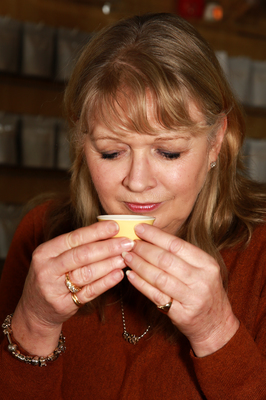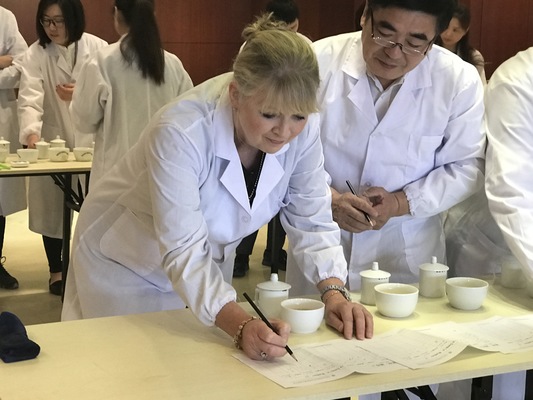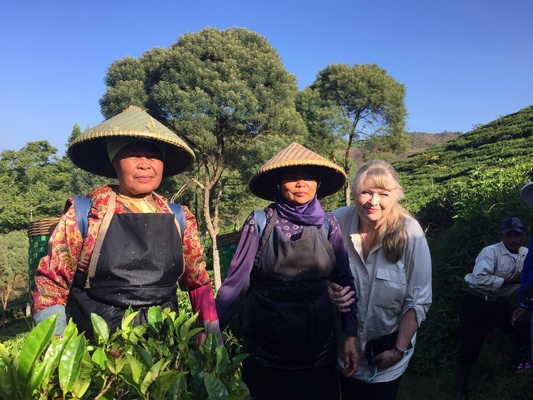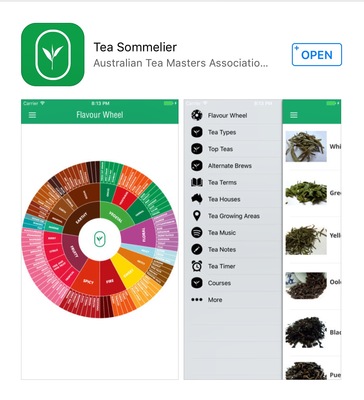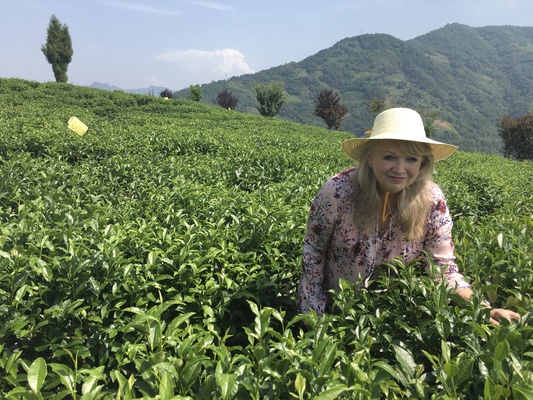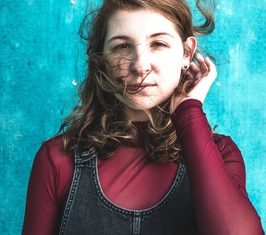Whether jiggled, dangled, with milk or withtout, tea’s warm in the cup but hot right now. ELISSA FRIDAY meets Geelong’s international authority on the global beverage.
Sharyn Johnston knows one of the world’s favourite drinks to a T.
Or perhaps that should be ‘tea’, because after 30 years of international study she’s now an expert in the world’s second favourite beverage.
The Bell Post Hill woman became a global authority on tea from her experiences travelling and working in 24 countries as a group training manager.
“I went to Asia a lot 30 years ago when people didn’t really go there much,” Sharyn says.
“I experienced so many different types of tea that I realised we knew very little about it in Australia.”
Sharyn began studying the aromatic beverage after giving up her corporate career but the only educational tea course she could find was in America. She made the trip but returned disappointed by the course.
“It was so bad,” she remembers.
Sharyn soon recognised the difficulties that each country had in sharing their tea culture, so she turned her focus to “breaking down those cultural barriers”.
Part of the work toward change included the honour of an invitation to sit on China’s China tea experts committee.
“There are only five people on it,” Sharyn notes.
In 2012 she used her product knowlege to establish Australian Tea Masters to expand opportunities for training and education throughout Australia and globally.
The organisations runs certfiied Tea Master and Tea Blending courses, along with offering other related services.
With its head office in central Geelong, the business recently opened the city’s first tea bar.
“We’re trying a completely new concept. The idea of our tea bar here is to make tea to go,” Sharyn says.
The bar offers around 280 varieties from around the world, including Geelong Breakfast.
Sharyn hopes her concept can “change the mentality around the drinking of tea”.
“It’s about making tea easier, getting more people to drink it. They can pick up a takeaway tea with a story, as is done so often with coffee,” she explains.
“We have a blending facility in Breakwater, so we blend all our own teas,” she says.
“Unfortunately, the supermarkets have shown us that what goes into tea bags is not very good material but it’s really all about what you put into the bag. It’s all high-volume, low-grade, mass-produced mixed blends designed for fast infusion, can’t be brewed twice and not whole leaves.”
Sharyn’s tea knowledge takes her around the world. She recently launched a variety in Korea after receiving an award for her contribution to the Korean tea during an expo in Seoul.
“I worked with 12 Korean tea farmers from Boseong to develop this tea blend, which is a world first for Korea,” she says.
A week after Korea Sharyn travelled to Singapore for a symposium with 100 chefs. As a key-note speaker, she also set off a revolution when she paired international teas with with food cooked by some of the chefs in attendance.
“Instead of having wine I paired tea with food,” Sharyn says.
“It changed the mentality of tea service.”
Back home, Sharyn developed the first government-accredited tea course in Australia and in 2015 organised Geelong’s first expo dedicated to the popular beverage.
“People were just surprised there was actually going to be a tea expo in Australia,” she says.
“The idea of the expo was so people could experience and taste different countries teas and to showcase anything that’s new in tea.”
Sharyn held a second tea expo in Melbourne last year, alongside coffee.
“For us the expo’s about launching start-up tea brands in Australia and bringing the international sector to Australia to showcase what they’ve got to the Australian public.”
Sharyn maintains her product knowlege with “12 cups a day” of differing varieties.
Her favourite is Wojeoon, a first-pick green tea from Korea.
“I also just love Darjeeling.”
But tea with milk and sugar always rates badly to Sharyn.
“Good tea doesn’t need sugar,” she advises simply.
“And good tea doesn’t need milk.”
Sharyn says that anyone who simply must include milk should add it to the cup last.
“Milk first is a British tradition that started originally from stopping the bone China cups from cracking. I used to drink tea with milk but I don’t anymore because once I had experienced the best tea in the world you don’t need to have milk in the tea.”
Along with understanding the rules of brewing and mixing, Sharyn also teaches western tea etiquette in China. The course covers aspect such as the formalities of high tea, placing the cloth, how to drink from the cup and with what the drink should be served.
Sharyn’s “tea mastery” classes also incorporate aspects of Eastern cultures.
“In tea mastery classes we teach cultural things like Korean, Chinese and Japanese tea etiquette,” she explains.
Sharyn believes that she learns someting about her favourite drink every day.
“Keeping that mentality is what mastering tea is about,” she says.
“To become a true tea master I think would take a lifetime and more.
“The main things are that you have to understand the production of tea, manufacturing processes, all the different countries producing tea and the types of tea they produce, the flavour profiles, the cultural sides and ceremonies, and the chemical composition of the tea plant right through to the cup.
“People have a perception that tea comes from different bushes but it’s the processing that changes the tea”.
Regularly invited to tea conventions all over the world, Sharyn recently judged a colossal 187 teas in a day for an event in China.
“You had to analyse quickly what you’re looking for, like the dry leaf, wet leaf, the liquor, so there’s a lot involved in tea judging,” she explains.
Sharyn recently returned from a conference in Sri Lanka where doctors from all over the world discussed their research into the health benefits of tea.
“As documented in history, tea was a medicine before it was a drink consumed like it is today,” she says.
“The two major components of tea are theanine and polyphenol and they create a calming and uplifting feeling. Historically the monks used it for meditation to keep themselves alert.
“It’s good for your bones, skin, your brain and it doesn’t give you the jolt of caffeine.
“Some great stories come out of tea.”
How should tea best be stored?
“Tea should be stored in a dark, dry, cool area in an air-tight container”.
What’s better: loose leaf tea or tea bag?
“A good-quality pyramid-style biodegradable tea bag will deliver just as good a cup of tea as what loose leaf can”.
Tea fact 1
“A lot of people may not realise that the tea bush is related to the common garden camellia japonica”.
Tea fact 2
“Green tea is cooling to the body and black tea is warming”.
Tea fact 3
“The number-one-selling tea in the world is English breakfast and it’s the number-one blend in the world because it’s been marketed so well. Next is Earl Grey and after that the green teas and herbal teas”.
Tea fact 4..
“Good-quality green tea is not bitter and when brewed correctly it tastes sweet.”




